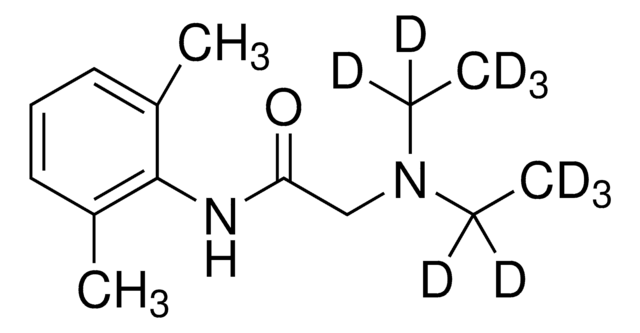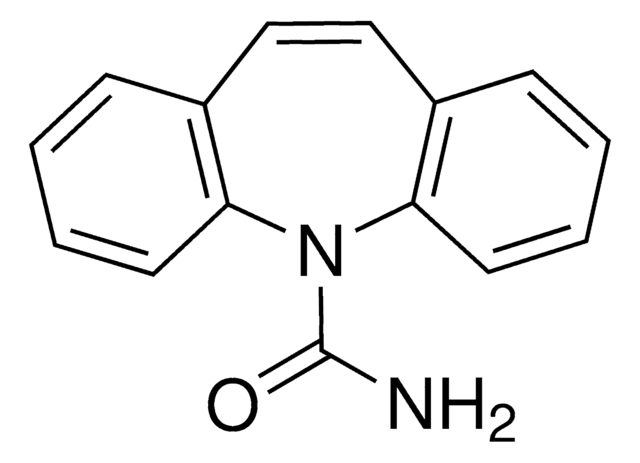추천 제품
Grade
certified reference material
Quality Level
양식
liquid
특징
Snap-N-Spike®/Snap-N-Shoot®
포장
ampule of 1 mL
제조업체/상표
Cerilliant®
농도
1.0 mg/mL in methanol
기술
gas chromatography (GC): suitable
liquid chromatography (LC): suitable
응용 분야
forensics and toxicology
형식
single component solution
저장 온도
−20°C
SMILES string
CCN(CC)CC(=O)Nc1c(C)cccc1C
InChI
1S/C14H22N2O/c1-5-16(6-2)10-13(17)15-14-11(3)8-7-9-12(14)4/h7-9H,5-6,10H2,1-4H3,(H,15,17)
InChI key
NNJVILVZKWQKPM-UHFFFAOYSA-N
유전자 정보
human ... SCN10A(6336) , SCN11A(11280) , SCN1A(6323) , SCN2A(6326) , SCN3A(6328) , SCN4A(6329) , SCN5A(6331) , SCN7A(6332) , SCN8A(6334) , SCN9A(6335)
일반 설명
법적 정보
신호어
Danger
유해 및 위험 성명서
Hazard Classifications
Acute Tox. 3 Dermal - Acute Tox. 3 Inhalation - Acute Tox. 3 Oral - Flam. Liq. 2 - STOT SE 1
표적 기관
Eyes
Storage Class Code
3 - Flammable liquids
WGK
WGK 1
Flash Point (°F)
49.5 °F - closed cup
Flash Point (°C)
9.7 °C - closed cup
가장 최신 버전 중 하나를 선택하세요:
이미 열람한 고객
문서
For efficient therapeutic drug monitoring, it is important for clinicians to have access to fast and robust analytical methods for accurate assessment of drug efficacy. Industrial trends toward highly specific LC/MS applications over traditional immunoassay have resulted in the need for high-speed chromatographic assays along with simplified sample preparation methods.
The benefit of HILIC over traditional reversed-phase chromatography is two-fold for both sample introduction and analyte detection. First, the high acetonitrile concentration of HILIC mobile phases allows for direct analysis of precipitated plasma samples without the need for additional sample solvent exchange. Second, the high acetonitrile content provides increased analyte response in positive ESI MS detection.
관련 콘텐츠
HILIC mobile phases consist of a high composition of acetonitrile, which facilitates the direct analysis of precipitated plasma samples without the need for additional sample solvent exchange.
Chromatograms
application for HPLCapplication for HPLCGlobal Trade Item Number
| SKU | GTIN |
|---|---|
| L-018-1ML | 4061833945292 |
자사의 과학자팀은 생명 과학, 재료 과학, 화학 합성, 크로마토그래피, 분석 및 기타 많은 영역을 포함한 모든 과학 분야에 경험이 있습니다..
고객지원팀으로 연락바랍니다.





